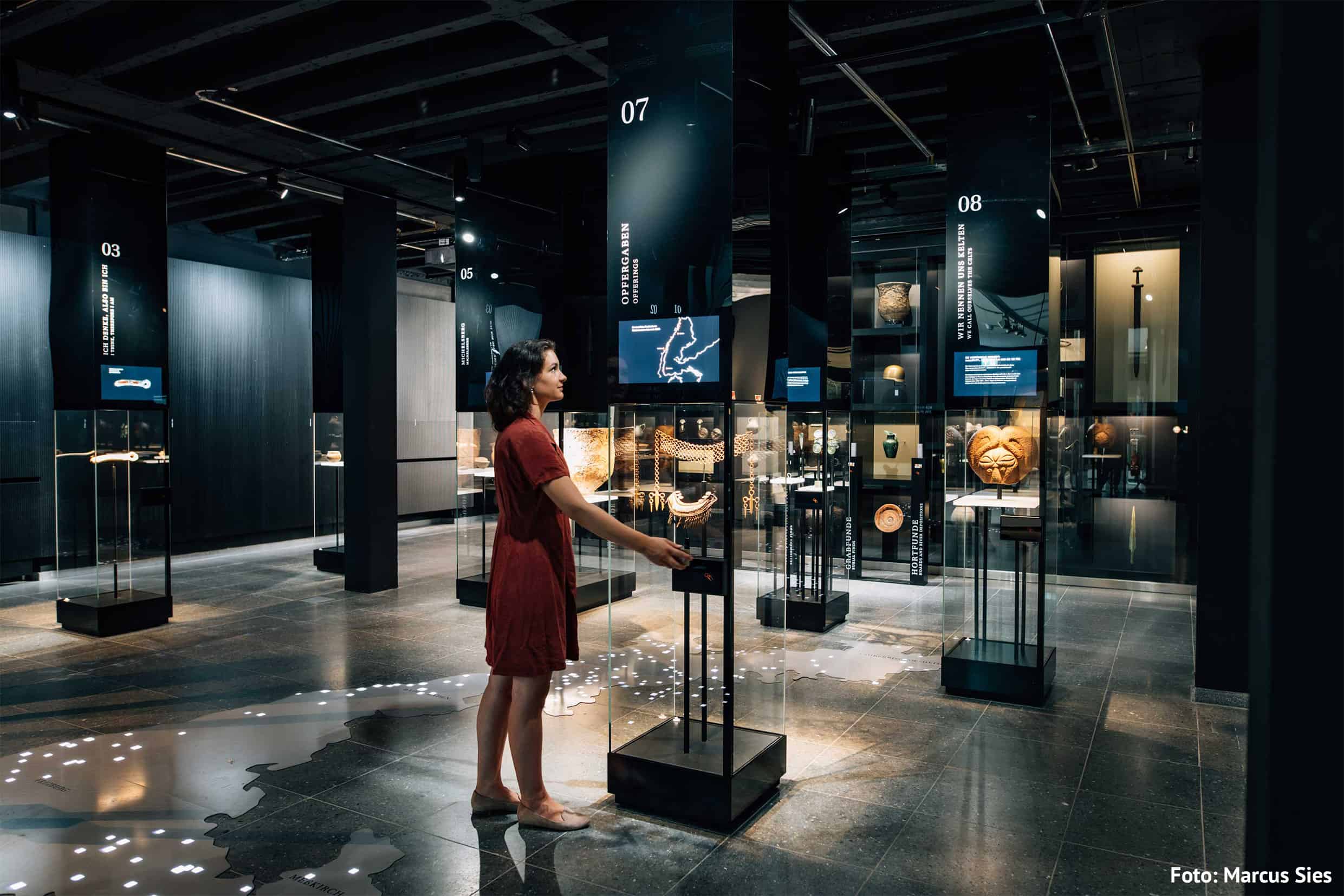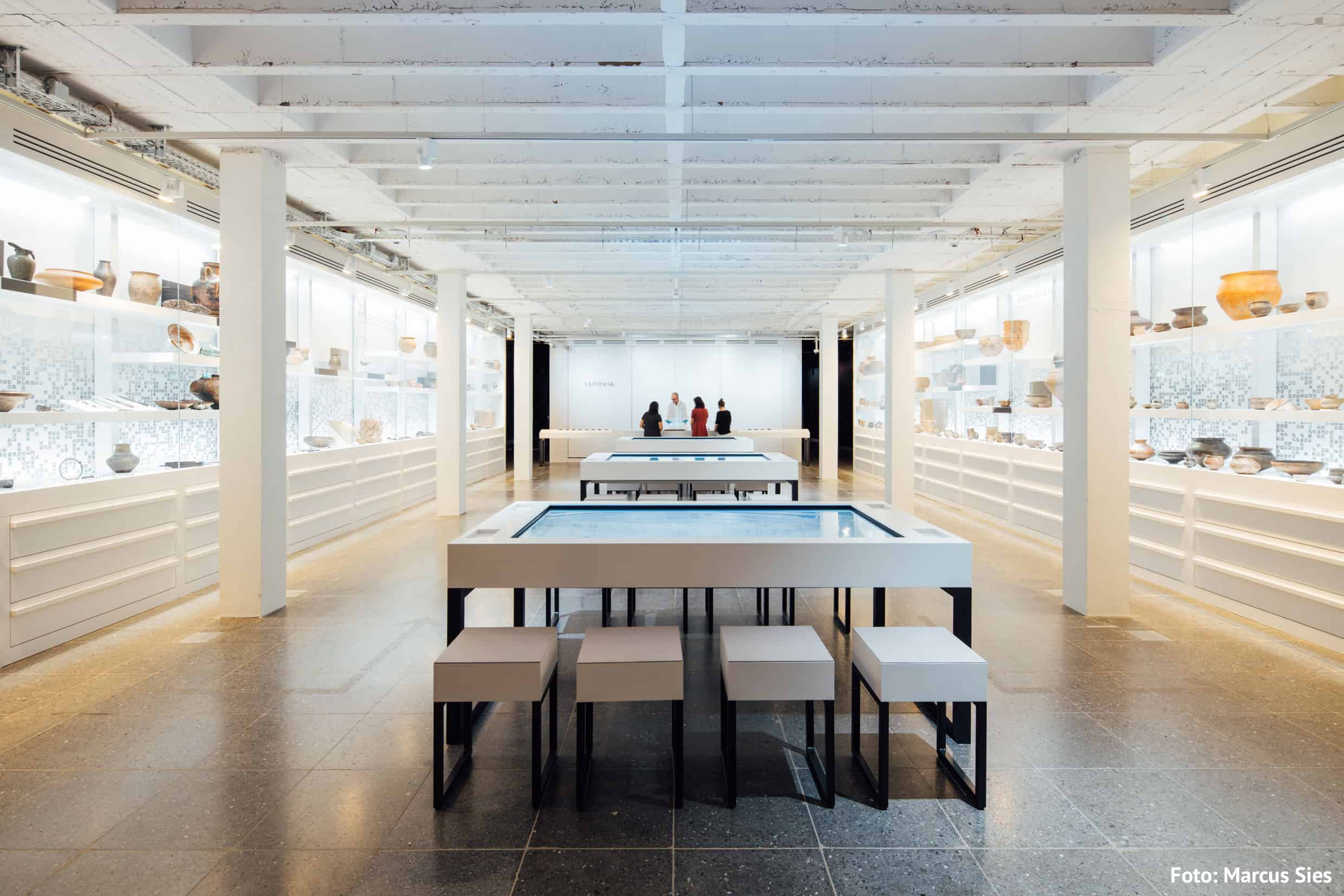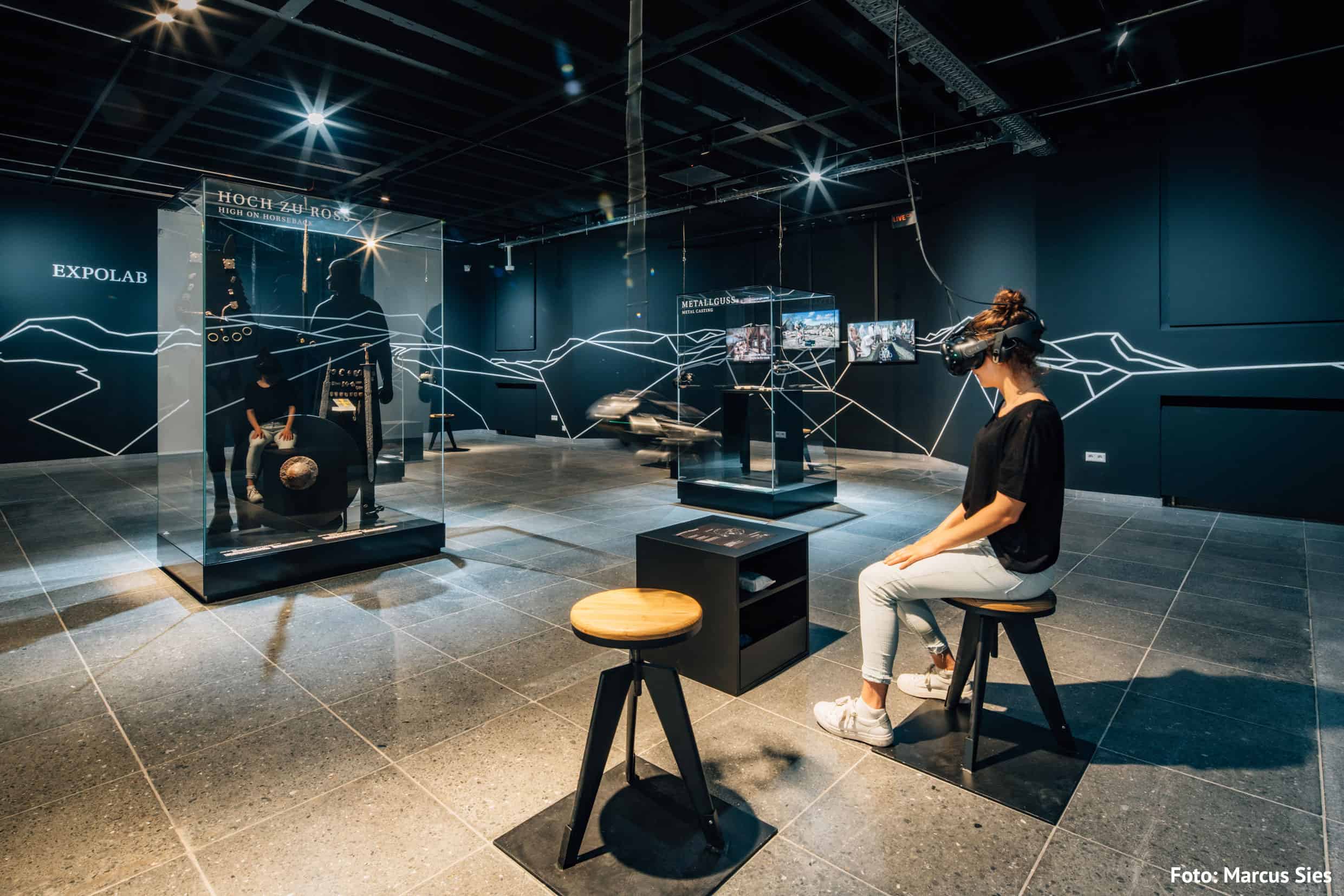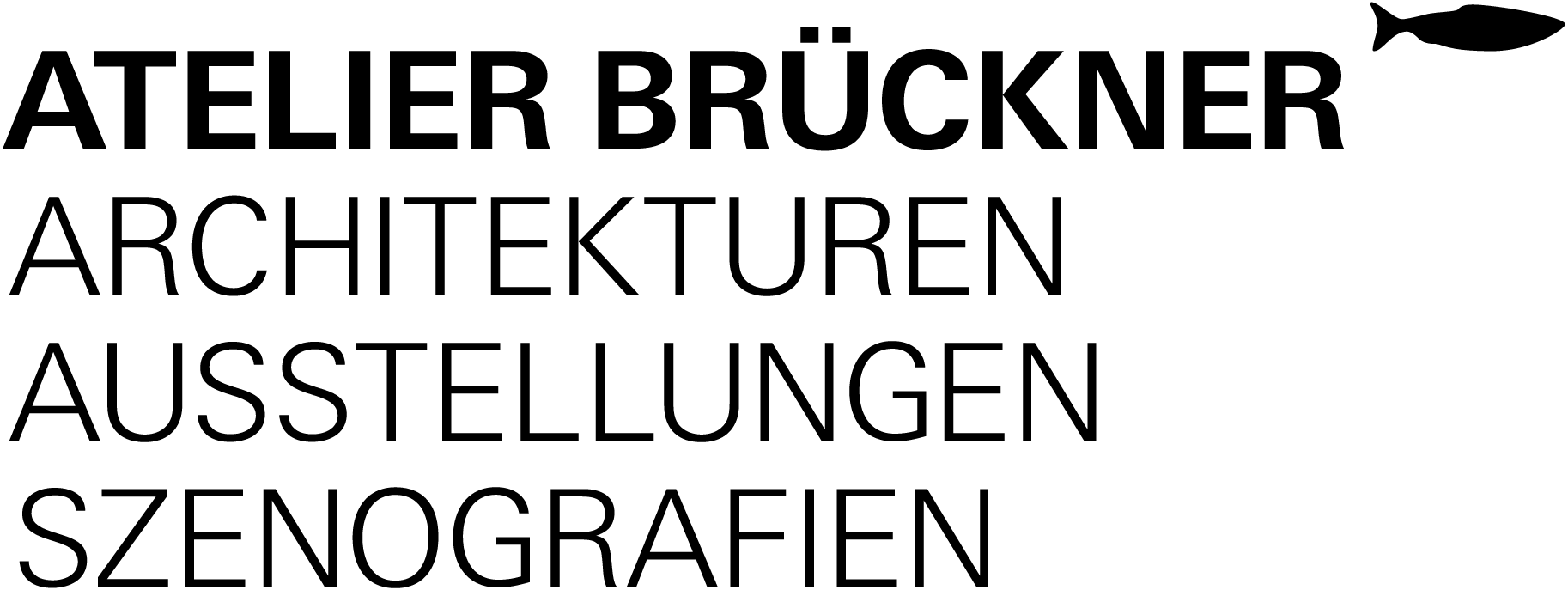Archaeology in Baden
Duration
Permanent from July 2019
Location
BLM Karlsruhe
Participants
University of Konstanz, HTWG Konstanz, BLM Karlsruhe, Atelier Brückner
The exhibition Archaeology in Baden at the Baden State Museum Karlsruhe is the first exhibition that follows the museum’s reorientation. In this, museum visitors become users who can access the museum’s collections according to their own interests. At first, the exhibits in this exhibition present themselves without further information. The focus is entirely on the aura of the original. Visitors receive information about the objects on demand – through the use of various technologies. Sometimes almost classically via displays mounted above the objects, sometimes using the latest interactive technologies such as Augmented and Virtual Reality. Always present to convey further information up close are several scientists, the “Explainers.” They even present original objects, which can then be touched, viewed, and examined by the visitors. With gloves, of course.
Room 1: Milestones of Baden
In the dark, almost mystically appearing first room of the exhibition, the focus is entirely on selected highlight objects that illustrate important aspects of archaeology in Baden. The highlight objects are placed in 13 display cases, arranged chronologically around a large floor map of Baden. Each display case represents a milestone in human history in Baden. Along the full length of the side walls runs an abstract timeline made of 2,000 narrow black slats, which illustrates how many generations lie between the present and the past. At the end wall of the room, the transition to the second room, there is another large display case in which objects are arranged in a grid. These are embedded in a historical context through listening stations.
The first room provides a foundation of information for the visitors, enabling them to independently explore content in the Expothek. The room therefore combines classical elements of exhibition design with contemporary mediation strategies. For example, no text is initially visible on the display cases, to focus entirely on the aura of the objects. When visitors place their card on the display case, the exhibit text appears in the corresponding language of the visitor.

Room 2: Expothek
The Expothek is the centerpiece of the exhibition. At a counter, scientists, so-called “Explainers,” present real objects to the visitors and explain historical contexts. Visitors can put on gloves themselves and touch and examine the objects. In this way, the aura of the objects becomes tangible for the visitors in the truest sense of the word. On the other side of the room stands a 3D scanner, with which the objects can be scanned. Visitors thus witness the museum’s conservation work live.
On the walls of the brightly lit room, which resembles a research laboratory, are long, floor-to-ceiling display cases. Chronologically arranged according to the epochs of the Stone Age, Bronze Age, Iron Age, as well as Roman times and Prehistory, around 1,400 objects are housed here as in a depot display. An ExpoPhone, which is hung out by the Explainers, enables object exploration via Augmented Reality. The functionality is very simple: when visitors point the display at a specific group of exhibits in the display cases, they receive further information about them. Three large media tables in the center of the room provide additional access to the collection. Here, visitors can, for example, research specific find locations, answer quiz questions, and view high-resolution images of the exhibits.

Room 3: Lablounge
The approach of first showing objects as freely as possible and only in a later step embedding them in their context is also pursued in the third room of the exhibition, the Lab Lounge. In the darkened room, there are only a few display cases with few objects inside.
Here too, an explanatory text is missing; instead, mixed reality binoculars hang from pulleys from the ceiling. When visitors pull them down, they are transported into the past and immerse themselves in the life of that time. Part of this life are also the objects just seen in the real space, which are now shown in their historical use.
The name “Lab” Lounge is deliberately chosen to emphasize that this room is in a continuous process of development. Here, novel technologies are presented and tested to see how they can be used for contemporary cultural mediation.






